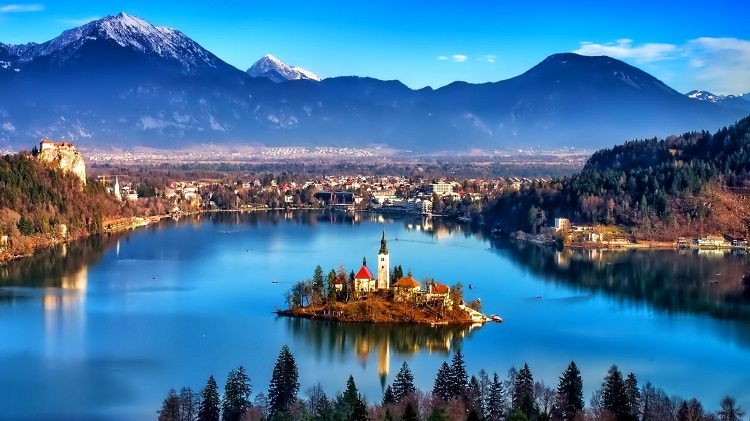
Europe is a rich mine of everything from the medieval and antiquity to the baroque and art nouveau due to its layers of history and the blending of its cultures. There is a complete side of nature to go with the main dish of culture that can be found on this amazing continent when you combine this with the Arctic conditions in the north and the lovely Mediterranean climes in the south.
Along with Catholic churches, deep lochs, and sweeping fjords, there are sinking cities, leaning towers, and mysterious old villages. Here are the best tourist destinations in Europe to assist you in planning your next vacation. This melting pot of history and civilisation is unquestionably an intriguing area for any traveler to explore.
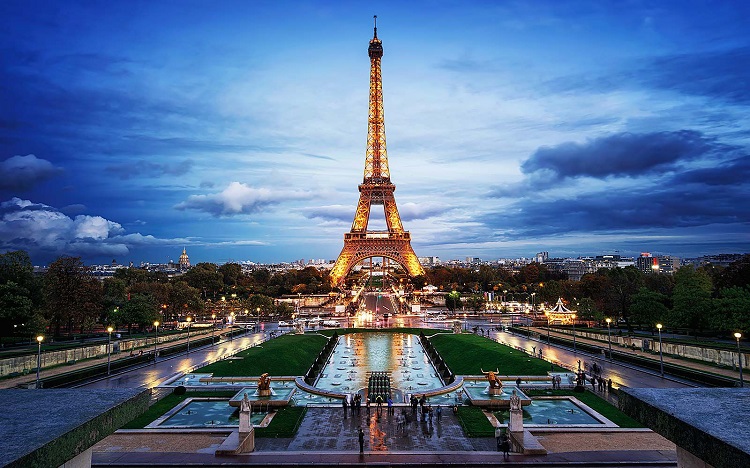
Image source: travelandleisure.com
One of the most well-known landmarks in France is the Eiffel Tower. The wrought-iron tower, which is located in the center of Paris's Champ de Mars, was initially constructed to act as the entry to the 1889 World's Fair.
At the time of construction, the 324-meter-tall tower, which is equivalent to an 81-story skyscraper, was the highest structure in the world. However, engineer Gustave Eiffel's design drew a lot of criticism, with people labeling it a monstrosity and "an impossible undertaking."
Restaurants and cafés, souvenir stores, historical displays, Gustav Eiffel's actual refurbished office, and a number of viewing decks are all located on the tower's three floors. The Eiffel Tower's first two levels can be reached by a staircase or a lift, but only an elevator is available for entry to the third level by outsiders. Golden lights shine throughout the tower at night.
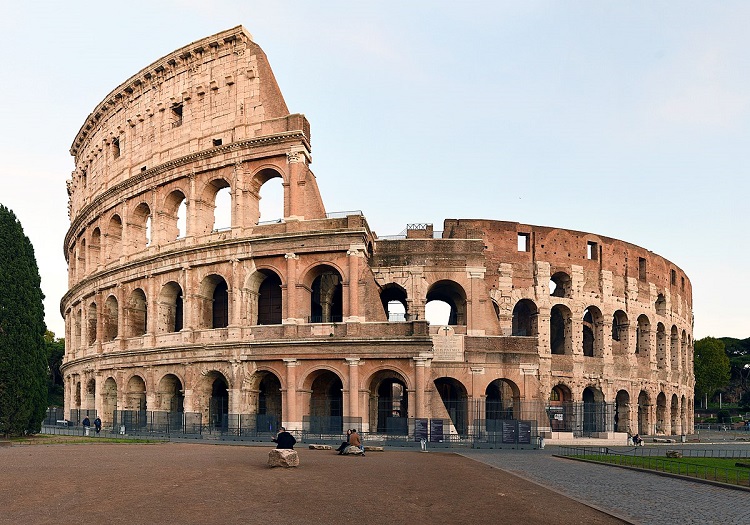
Image source: wikipedia.org
The Colosseum, also known as the Flavian Amphitheater in Rome, is one of the most popular tourist destinations in Italy and continues to be one of the most recognizable images of Imperial Rome. Using volcanic rock and travertine limestone, it was constructed between 70 and 80 AD. It was the largest amphitheater in the world when it was built and for a very long time after that. It could accommodate 80,000 people.
The Colosseum is a large, imposing edifice with a base area of 24,000 square meters and an exterior wall height of 48 meters. It once included a velarium (a retractable awning to shield spectators from inclement weather) and a substantial wooden floor covered in sand. Animals and gladiators were imprisoned beneath this floor in a maze of tunnels prior to the contests.
The Colosseum was the location of numerous other performances and spectacles, including reenactments of historic battles and executions, while being most well-known for hosting gladiator fights. More impressively, it was also the site of fake sea battles, when the arena was quickly filled with water and drained of it so that ships might float while the performances were taking place.
The amphitheater was used as a fortification, a temple, and temporary homes over the years. Stone robbers also took a lot of the loot.
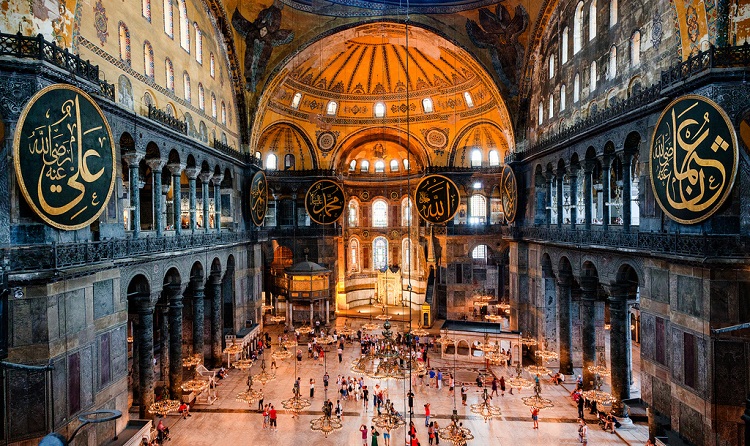
Image source: beforetravelturkey.com
Hagia Sophia, which has been a magnificent sight to behold for almost a thousand years, once held the title of largest cathedral in the world. When Istanbul was known as Constantinople in 537 AD, Hagia Sophia was constructed as an Eastern Orthodox Cathedral. From 1453, it was an Ottoman mosque, and it is now a museum open to people of all religions.
The Hagia Sophia's dome is a wonder in itself, and the structure as a whole is a wonderful representation of Byzantine architecture as well as the diverse history of Istanbul. With its unique paintings and intriguing relics, the building allows you to put together the history of the city as you walk about it now.
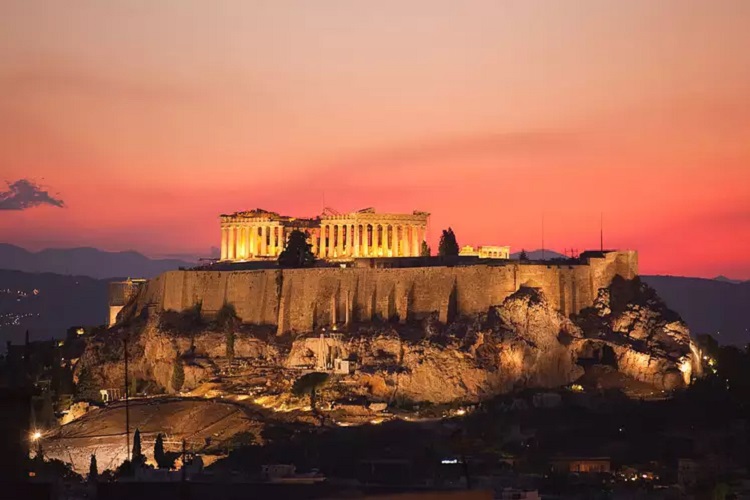
Image source: timesofindia.indiatimes.com
The most prominent structures on the Acropolis were all built in the fifth century BC, all under the watchful eye of the statesman and general Pericles.
The Parthenon, a temple constructed to thank the gods for the victory over Persian invaders, is at the center of the Acropolis (though it also served as the city treasury for a time). Other notable structures are the Propylaea gateway, which serves as the Acropolis' entrance, the Erechtheion Temple, which is devoted to Athena and Poseidon, and the diminutive yet stunning Temple of Athena Nike.
During the Morean War in 1687, several of the structures on the Acropolis suffered damage. The majority of the antiquities discovered inside the temples that were spared destruction have now been transferred to the neighboring Acropolis Museum.
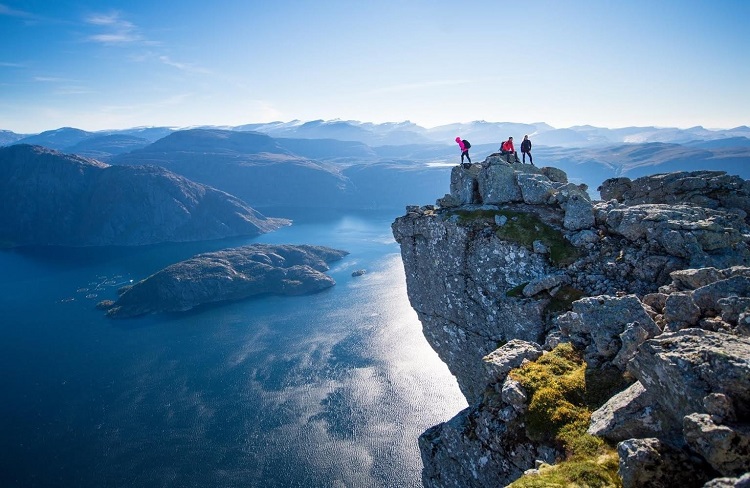
Image source: muchbetteradventures.com
The majestic fjords of Norway are among the main draws for tourists. The towering U-shaped valleys and their carved cliffs were created by glaciers over an inconceivably long period of time (around 2.5 million years), creating a breathtaking panorama that is almost too large to take in.
Norway has more than 1000 fjords, although only a small number of them are heavily traveled (such as the Hardangerfjord and Geirangerfjord), so it's still feasible to find some peace and quiet. A cruise ship is a fantastic way to explore the fjords' towering walls while traveling across the ocean. As an alternative, trekking on top of the fjords provides a bird's-eye view of the breathtaking scenery.
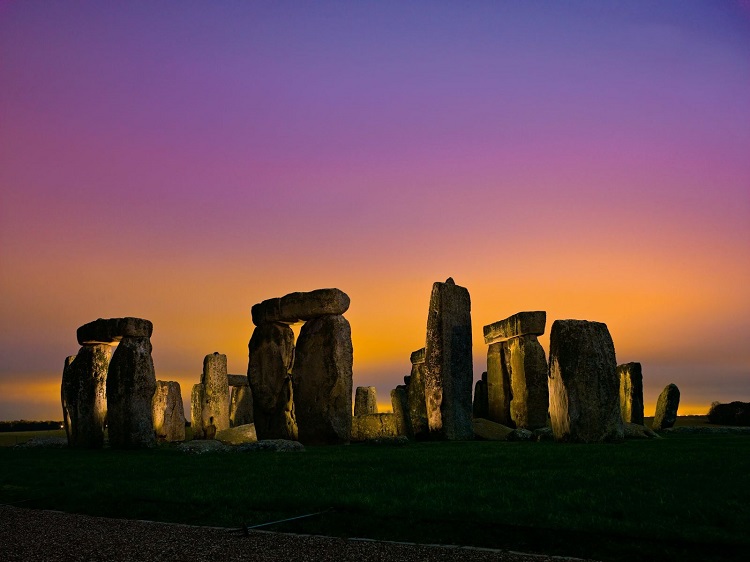
Image source: nationalgeographic.co.uk
One of the most well-known sites in the UK is the ancient monument known as Stonehenge. Stonehenge is located in an area of England noted for its numerous burial mounds and was constructed between 3000 BC and 2000 BC.
The majestic Stonehenge and its surrounds are a UNESCO World Heritage Site. It is composed of a large ring of four-meter-tall sandstones with an inner horseshoe-shaped stone circle.
Stonehenge's function is still a mystery. It might have been a burial ground dating to 3000 BC, according to archaeologists. The placement of the stones suggests that it may have been used as a Neolithic calendar, a place of worship, or a scientific observatory. The stones were moved at least 19 kilometers to their present site, and they each weigh approximately 25 tons.
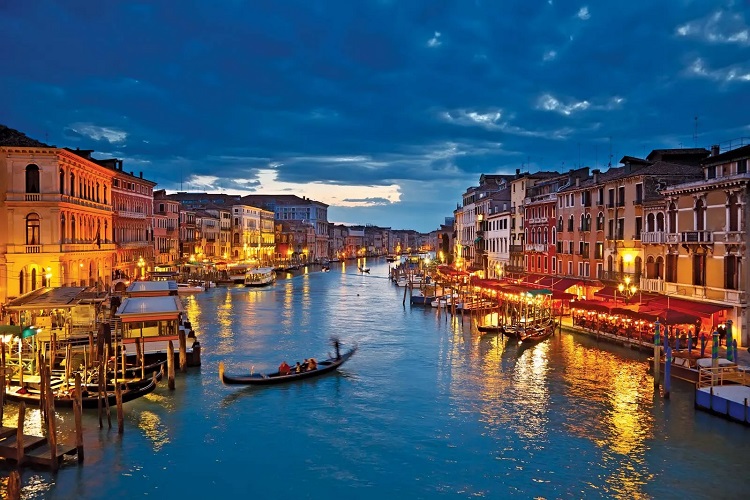
Image source: britannica.com
Every other canal city in the world is compared to Venice because it is the original canal city. More than 150 rivers and 400 bridges, including the renowned Bridge of Sighs, may be found in the mysterious, soggy city.
The two-mile-long Grand Waterway, which flows past St. Mark's Square and is bordered with some of Venice's ancient buildings, from the Medieval to the Baroque, is the main canal in the city. Boats on the river are utilized for daily tasks like garbage collection in addition to ferrying tourists about in striped shirts and wide-brimmed hats worn by gondoliers.
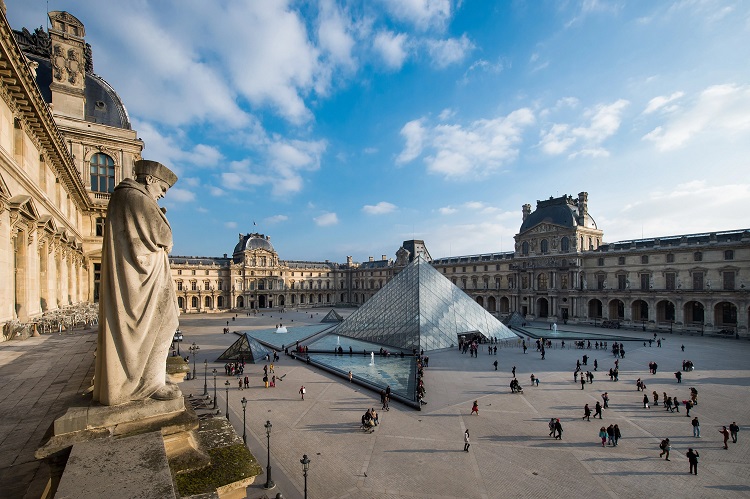
Image source: louvre.fr
The largest and most popular art museum in the world is located on the Seine River's bank. Over the ages, the original 13th-century Louvre Palace that previously stood here was enlarged and renovated, creating the enormous nearly 73,000-square-meter structure you see today.
The glass and aluminum pyramid outside the museum has evolved into a contemporary representation of the Louvre. Now serving as the museum's main entrance, it is 21.6 meters tall and 34 meters on each side.
About 35,000 of the astonishing 380,000 pieces in the Louvre's collection are on exhibit all the time. Along with paintings, these also contain sculptures, sketches, and artifacts from ancient sites. The museum also has the magnificent six by nine-meter Coronation of Napoleon painting and the eight-foot-tall Winged Victory of Samothrace sculpture in addition to Leonardo da Vinci's La Mona Lisa and the Venus of Milo.
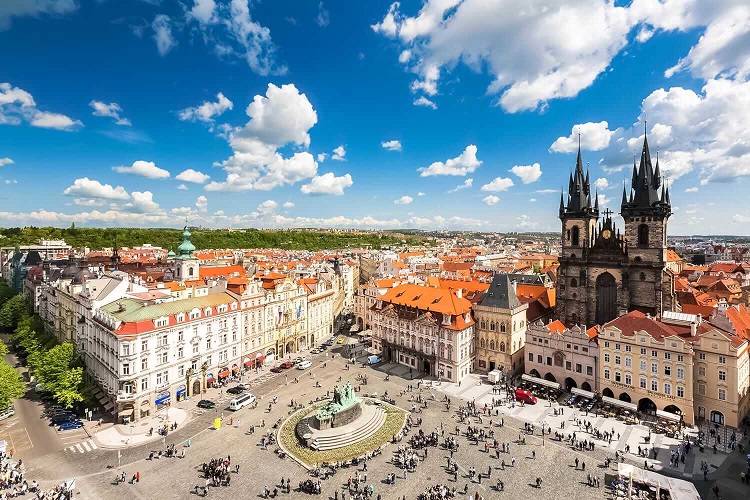
Image source: amazingczechia.com
The capital of the Czech Republic's medieval Old Town is a famous tourist attraction since it is teeming with historical landmarks. The Old Town Hall, which is located in the Old Town Square and boasts the Orloj, or Astronomical Clock, the oldest clock still in use in the world, dates back to 1410 and may be found there.
The Charles Bridge spans the Vltava River, linking Prague's Old Town to the Lesser Town. Although the bridge's construction began in 1357, it wasn't finished until the early 15th century. A lively nightlife scene and a large number of clubs make the Old Town area a fun spot to hang out after dark.
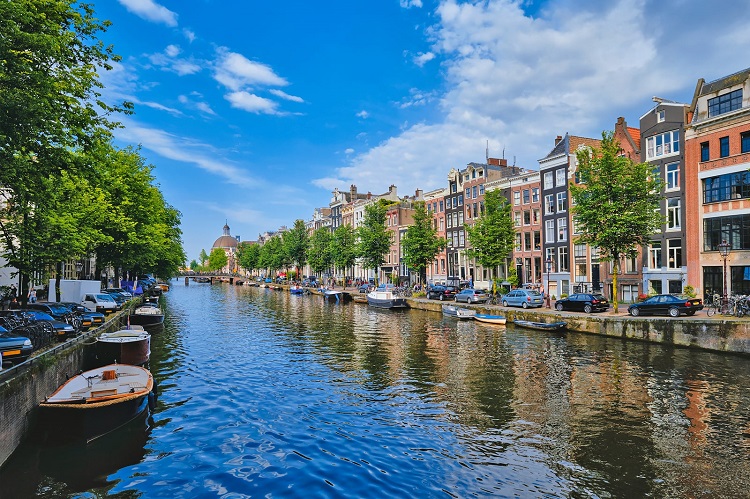
Image source: hotels.com
Amsterdam's canals are well recognized. In fact, the Netherlands' capital is surrounded by more than 100 kilometers of canals that form over 90 islands and require 1,500 bridges to cross. The city's rivers have earned Amsterdam the moniker "Venice of the North."
The four main canals in Amsterdam form concentric rings around the city's core in the area known as the Grachtengordel. The canals, which were dug in the 17th century, served a variety of purposes, including transportation, sewage disposal, and drinking water. The canals that make up Amsterdam's picturesque cityscape are still present in the current city. Townhouses from the 17th century line the canals, which ups the appeal factor even more.
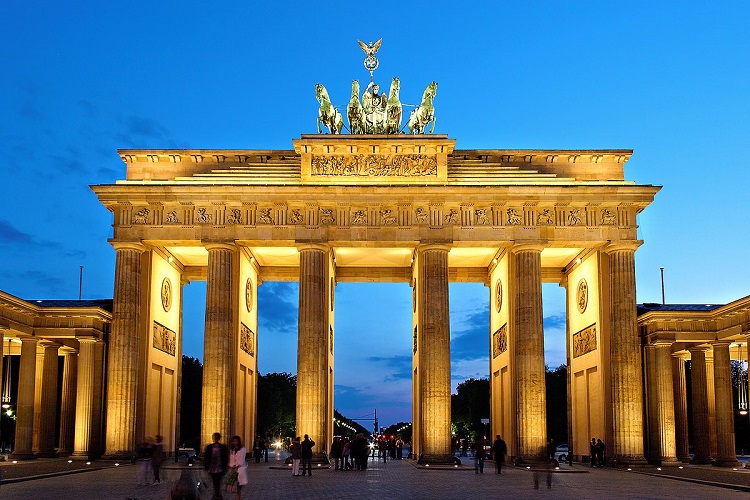
Image source: wikipedia.org
The Brandenburg Gate, which was constructed in the 18th century on Frederick William II of Prussia's orders, has come to represent Berlin. The gate is enormous, measuring over 65 meters in length and 26 meters high, and it is topped by a quadriga, or four-horse chariot.
As it is located where the route that connects Berlin and Brandenburg town begins, the gate owes its name to the town of Brandenburg a der Havel. The gate has played a pivotal role in numerous historical events that have formed Germany during the past two centuries. Despite suffering severe damage from bombs and gunfire, it endured World War II and was utilized as a Nazi symbol.
Up until the erection of the Berlin Wall, the gate served as an unofficial border between East and West Berlin. Additionally, 100,000 people congregated at the Gate to commemorate the fall of the Wall in 1989.
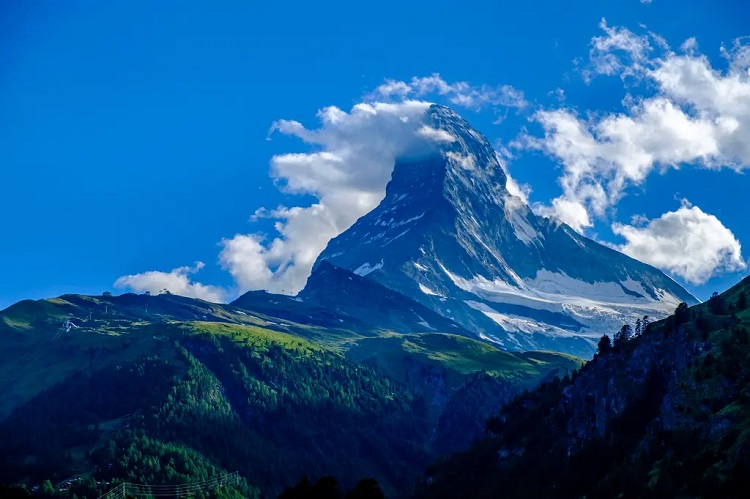
Image source: nypost.com
The Matterhorn is one of Europe's tallest summits at 4,478 meters. Right over the Swiss town of Zermatt, which is located on the border between Switzerland and Italy, is the breathtaking mountain. The Matterhorn, a well-liked hiking destination in the Alps, is exceptional because it is a pyramid-shaped peak that can be scaled from all four directions.
It is also feasible to finish a 10-day trip around the peak for those who aren't climbers. This is regarded as one of the most picturesque hikes in the Alps, passing through Alpine woods, flower-filled meadows, and glacier lakes.
Skiers and snowboarders flock to the region around the Matterhorn and Zermatt in the winter because the resorts at Zermatt and Breuil-Cervinia have ski lifts that go to the top of Theodul Pass. Additionally, there is the Matterhorn Museum, which explores the interesting history of alpinism, and a chance to take a helicopter trip to get a close-up glimpse of the snow-covered peaks.
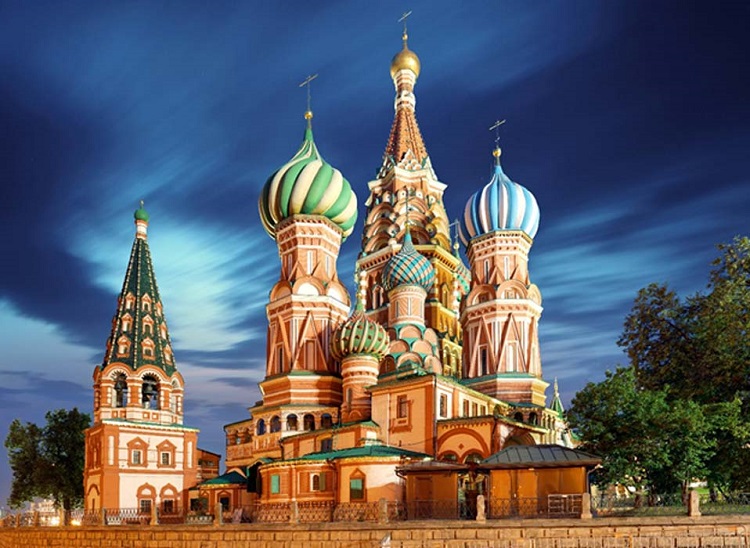
Image source: ancient-origins.net
The winding Cathedral on Moscow's immensely famous Red Square, with its multicolored onion-domed roofs, is arguably the most recognizable sight in all of Russia. Ivan the Terrible, another well-known figure, also constructed St. Basil's Cathedral in 1555.
The building is an outrageously colorful lollypop of odd designs that resembles a funfair more than anything else in Russia. The cathedral is a representation of Russia due to its distinctive architectural design and historical ties to a successful fight in Tatarstan.
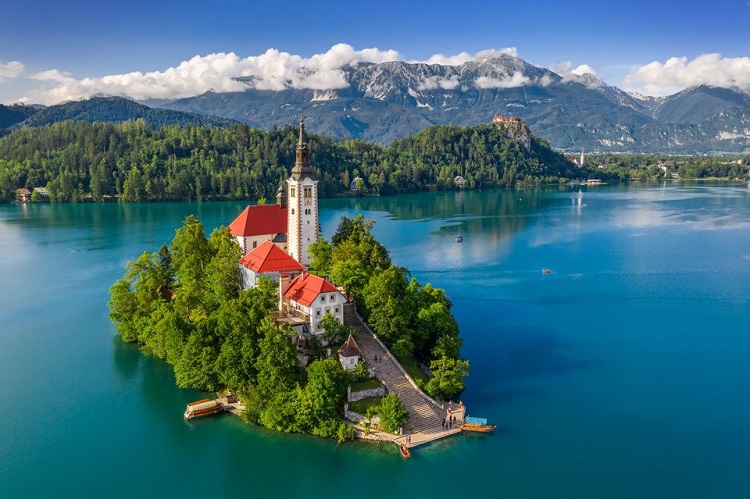
Image source: livingnomads.com
A shimmering emerald lake surrounded by breathtaking verdant hills may be found in northwest Slovenia, close to the town of Bled.
Take a pletna, a vintage wooden boat, over to the tiny Bled Island in the center of the lake.
The Church of the Assumption of Mary, a 17th-century structure with some gothic frescoes from the 15th century surviving in place, is located on the island.
One of the finest things to do in the region is to simply stroll around the lake and take a break for a swim in the calm waters. Bled Castle is located nearby this wonderfully lovely location.
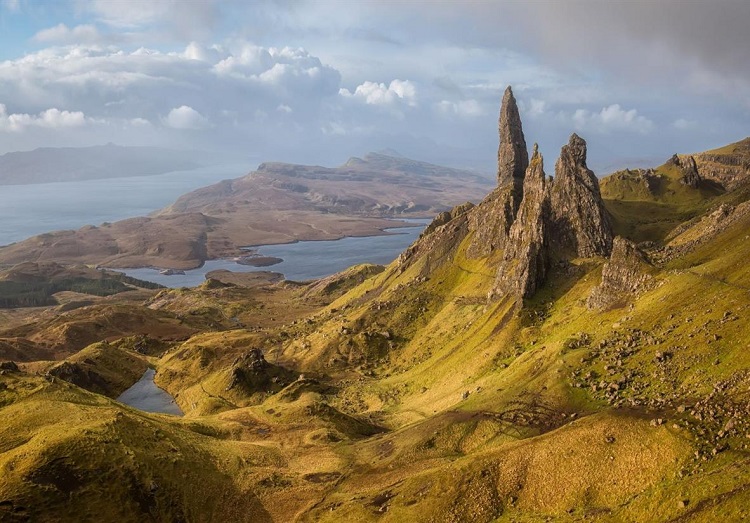
Image source: macsadventure.com
Northern Scotland is home to the harsh, hilly Scottish Highlands. In this gorgeous place, amidst the stunning environment, there are lots of things to do. Glencoe Valley is home to waterfalls and red deer, and Ben Nevis, the highest mountain peak in the United Kingdom, is nearby.
In the Central Highlands, Loch Ness is another location where you might be able to see the fabled Loch Ness Monster or you might just go for a stroll and take in the peaceful surroundings. The main city in the area, Inverness, is likewise located in the Scottish Highlands. You might be able to see dolphins playing in the water nearby in Moray Firth.
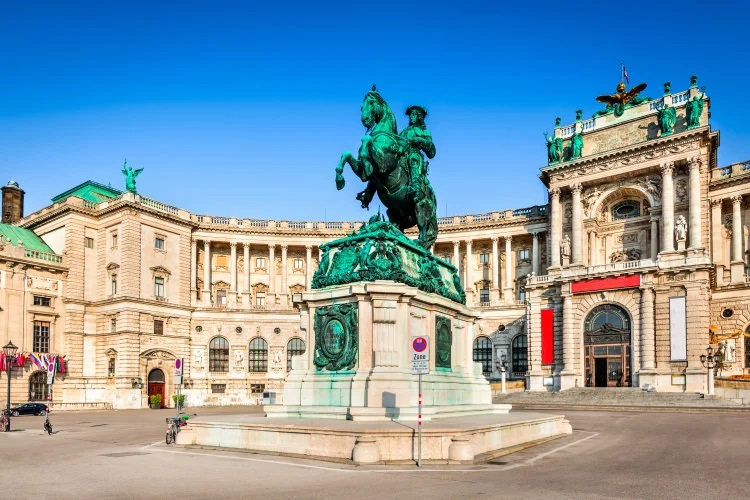
Image source: historyhit.com
The palace was initially constructed by the Seat of Habsburg in the 13th century to house one of Europe's most powerful royal houses. The Hofburg, formerly an imperial palace and current residence of Austria's president, was once a residence for the kings and emperors of the Holy Roman Empire.
Over the years, the palace was enlarged to include royal homes, a church, the Spanish Riding School, the Court Library, and the Imperial Court Theater (which is the National Theater of Austria in Vienna today).
With 240,000 square meters divided into 18 wings, the Vienna Hofburg is enormous and a large portion of it is accessible to the general public. More than 2,500 rooms total in the vast complex, many of which are still occupied by the people who work and reside here, along with 19 courtyards.
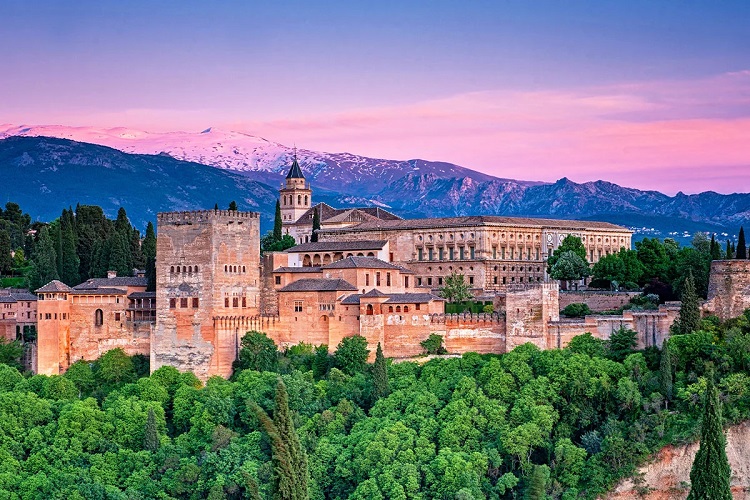
Image source: hispanico.pl
Alhambra, which means "the red one" in Arabic, was first constructed in 889 CE, but it wasn't until the middle of the 13th century that it took on its current appearance and enormous 142,000 square meter size.
Over the decades, the stronghold was abandoned, damaged, and partially reconstructed, though not always with great care. However, the Alhambra continues to be one of Spain's most stunning examples of Muslim art and architecture.
The Alhambra's most striking characteristic is its natural earth red color, which was achieved by a combination of red clay, stacked brick, and stone. Inside, numerous Moorish castles, royal baths, and fortified towers are covered in beautiful stucco work.
In addition to offering stunning views of the Alhambra, the adjacent Palacio de Generalife, with its terraced Persian gardens, is also well worth a visit. The summer palace, with its numerous colonnades and pavilions, is a sight to behold in and of itself.
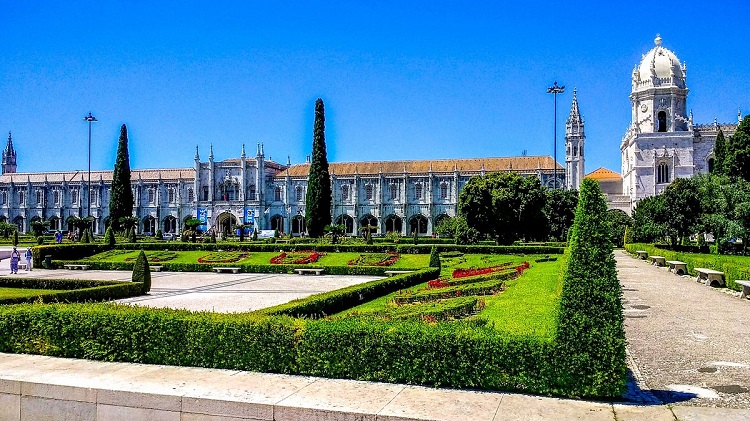
Image source: tripadvisor.co.uk
One of the most well-known buildings in Portugal is the Jerónimos Monastery. The Manueline or Portuguese late Gothic style monastery, a UNESCO World Heritage Site, was constructed in Lisbon next to the Tagus river.
Manueline architecture is distinguished by its elaborate decorations, which include numerous semicircular arches in doors and windows, as well as by the incorporation of nautical elements, such as shells and pearls.
The monastery's building process, which lasted slightly over 100 years, started in 1501. The original building was made of gold-colored limestone, but over time, several monarchs and architects added their own touches with imposing paintings, gold-tiled ceilings, and a great deal of intricate woodwork.
The monastery's primary entrances, which include a 32-meter, two-story-high side entrance and a smaller southern gateway that leads directly to the main altar, are through the Church of Santa Maria's gates. There are plenty of fountains, 16th-century structures, and pavilions to explore and learn about on the monastery's expansive grounds and gardens.
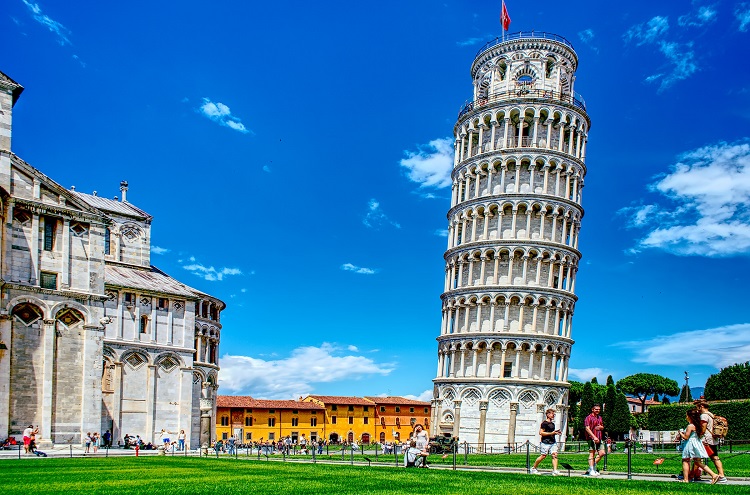
Image source: headout.com
Thanks to the generosity of widowed nobleman Donna Berta di Bernardo, work on the tower of Pisa, which is a part of the cathedral complex and consists of three other buildings, began in 1172. Unfortunately, the tower began to sink by the time the second floor had been erected because the architect in charge of the project neglected to adequately inspect the ground before beginning.
Construction was then put on hold for more than a century due to conflicts with nearby Florence. The tower ended up being 55.86 meters tall on the lower side and 56.67 meters tall on the higher side by the time construction was able to resume. The work was ultimately completed after nearly 200 years.
Today, visitors can once more ascend one of the two staircases to the tower bell chamber to view its seven bells, one for each note of the musical scale (the stairway facing north includes two extra steps due to the elevation).
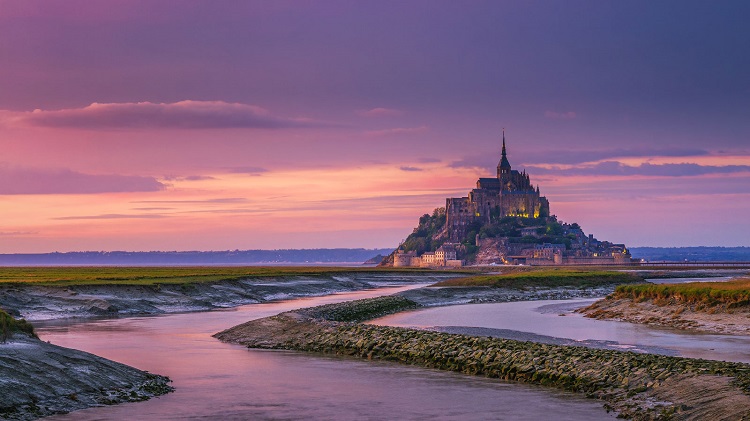
Image source: normandie-tourisme.fr
This renowned fortified island is situated about a kilometer off the French region of Normandy. The abbey at Mont-St-Michel, which dates to the eighth century and is still in use, may make you feel as though you have been transported to a different era as you stroll around. It's interesting to examine the antique chapels and walls.
The island seems to be a floating fortification in the sea when the tide is high. The island was previously only accessible on foot or by automobile during low tide, but a 2014 bridge allows for year-round pedestrian access.
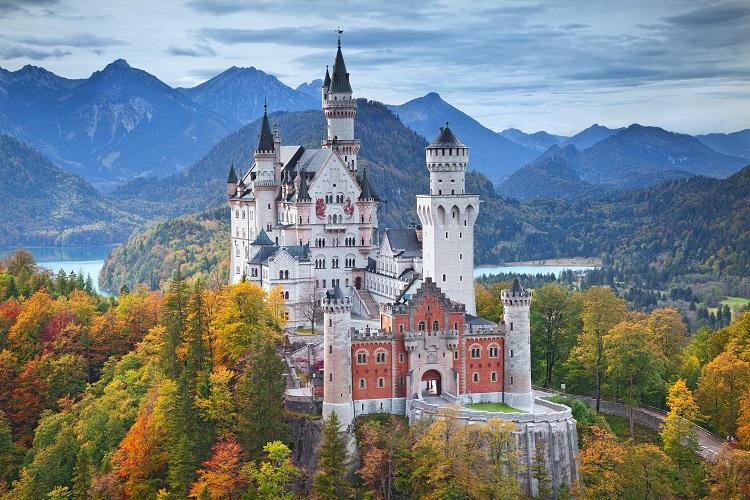
Image source: bestsolu.live
Neuschwanstein Castle, one of "Mad" King Ludwig II of Bavaria's architectural undertakings, is the archetypal castle from fairy tales. In fact, Walt Disney's Sleeping Beauty Castle was influenced by the castle's soaring spires and romanesque revival design.
Ludwig unfortunately never got to live in his castle because he passed away in 1886, the same year the building was finished. Construction on the castle started in 1869. The castle's lovely location in South Bavaria, surrounded by wooded mountains and lakes that reflect the surrounding landscape, is almost as impressive as the structure itself.
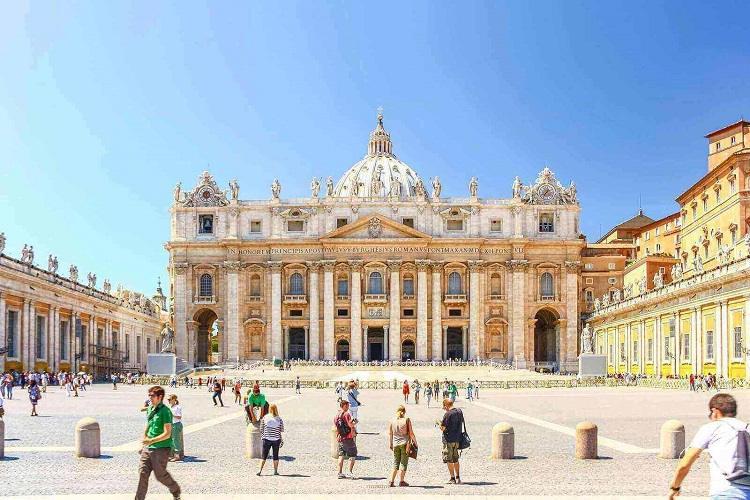
Image source: rometourtickets.com
The Sistine Chapel's breathtaking splendor is the best justification for visiting Vatican City. The chapel, which was created beginning in 1473 and features artwork by Renaissance artists including Botticelli, Domenico, Michelangelo, and others, is still used to elect a new pope.
Over 460 square meters of paintings inspired by both the Old and New Testaments are shown on the 40-meter-long and 13-meter-wide ceiling, which was painted by Michelangelo himself.
A smart plan is required if your ultimate objective is to make it through to the Sistine Chapel as well. The chapel can only be accessed through the Vatican Museums, a huge network of galleries that runs for over 14 kilometers and holds one of the biggest collections of ancient art in the world.
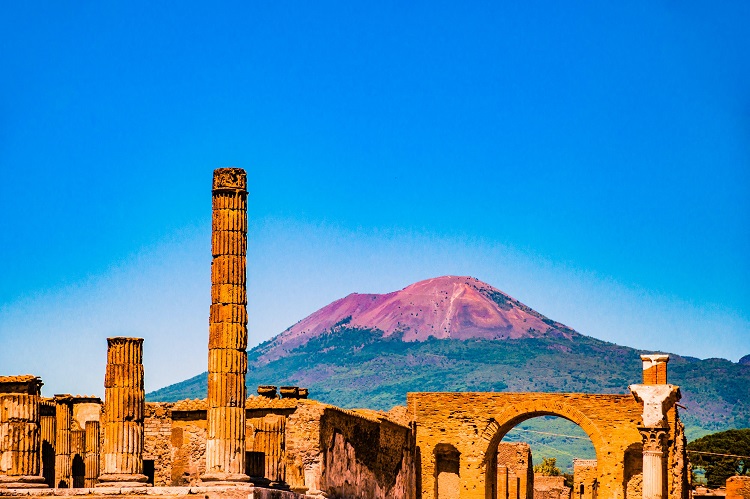
Image source: lonelyplanet.com
One of Italy's most popular and arguably most fascinating tourist destinations is the ancient city of Pompeii. Pompeii was tragically buried under tons of volcanic ash after Mount Vesuvius' tragic eruption in 79 CE, which resulted in a town that is remarkably well preserved despite killing roughly 10% of its inhabitants.
Today, tourists to Pompeii can once more stroll through its streets and go into some of the town's most well-known structures, including the thermopolium, the Villa of the Mysteries, and the Lupanare (a brothel) (the Roman version of a fast food joint).
The huge 440,000 square meters of Pompeii's ruins would require three to four days for a visitor to thoroughly investigate them.
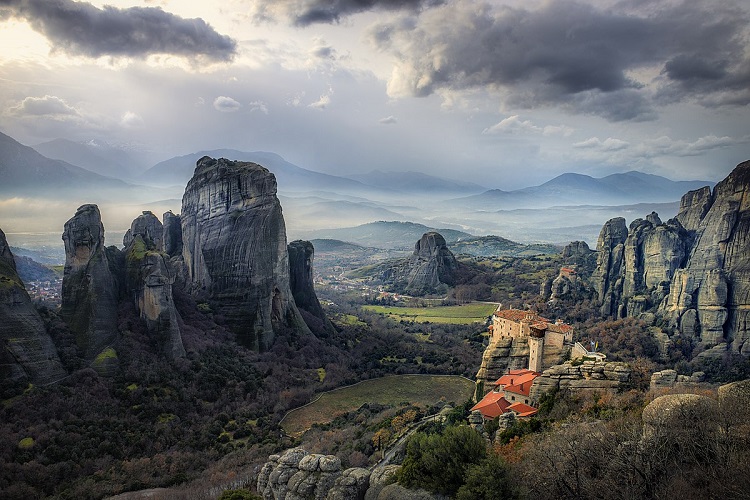
Image source: wikipedia.org
Greek meaning "elevated," Meteora is a protruding rock formation in the Greek region of Thessaly. Its untamed surroundings are dominated by boulders that resemble hills. However, the monasteries that perilously cling to the rocks are a significant part of what makes that spectacular environment so amazing.
This holy monument, some of which still welcome visitors today, is situated on cliffs with staircases carved directly into the stone. It dates back to the fifteenth century. The Holy Trinity Monastery, the most well-known of them, is perched an incredible 400 meters atop a natural rock tower and is a spectacular site to behold.
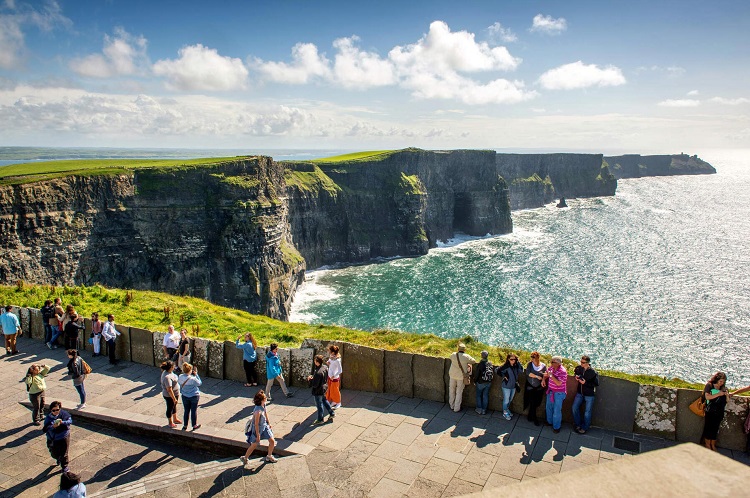
Image source: ireland.com
The Cliffs of Moher, which lie in Ireland's County Clare, are a breathtaking sight. From Hag's Head to Doosouth, 214 meters of sheer stone form the coastline's cliffs. The Aran Islands may be seen across the clear waters from the top of the cliffs.
You can see the cliffs' castle-like appearance when strolling along the coastal walkways that run along the cliffs. The cliffs have appeared in various movies, including Harry Potter, and have been the topic of numerous folktales and folklore.